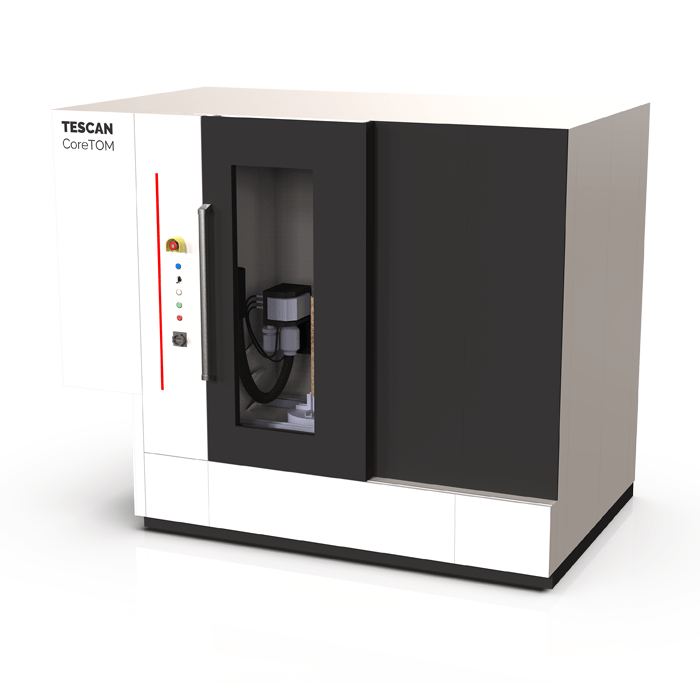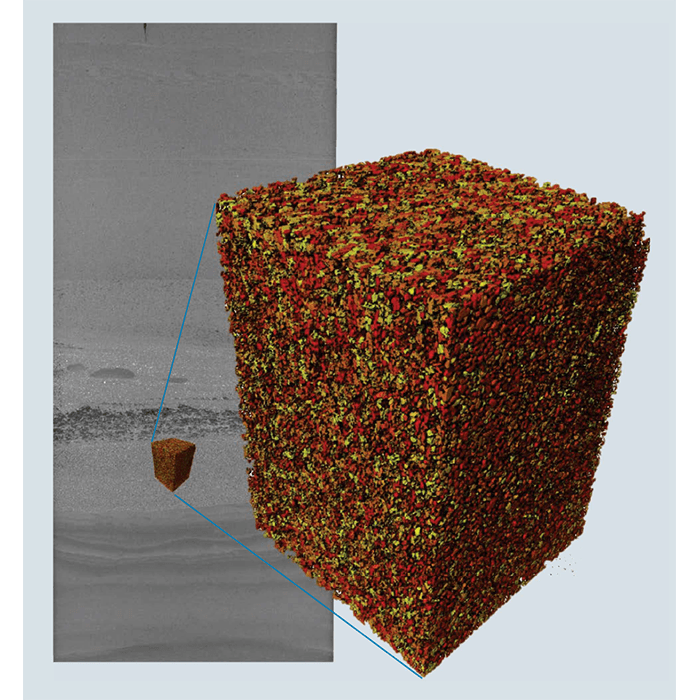
TESCAN CoreTOM
Computed TomographyIn situX-ray ImagingX-ray Microscopy

Lacustrine turbidites are a reliable record of seismic activity. When a turbidity
current moves downslope a typical sedimentary sequence is created afterwards,
including a fine to coarse grained sand fraction at the bottom (if the current has
enough energy) towards a layer of fine grains of silt or clay towards the top. The
characterisation of those turbidites on different locations is essential to reconstruct
the complete impact of past earthquakes.
When sedimentary structures are present in cores, it is possible to reconstruct the
orientation and flow direction with CT. However, if such sedimentary structures are
not present, grain fabric and size analysis can reveal important information. The
resolution of medical CT is not sufficient to analyse grain sizes, thus there is a high
demand for sediment core analysis to evaluate grain size in a non-destructive way using a system like the TESCAN CoreTOM.
